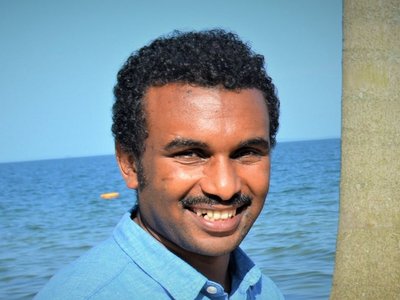

Nile tilapia (Oreochromis niloticus) is an economically important fish species. Natural populations of Nile tilapia in East Africa thrive in wide range of habitats, some of which are geographically isolated. Using the advanced Geometric Morphometrics method, the shape of 465 individuals of 12 native populations from Ethiopia, Kenya and Uganda were analysed to determine whether morphological variations exist among the populations and whether these variations follow their geographical locations and the previous delineation of the 7-subspecies based on Traditional Morphometrics. Marked shape variation was observed on the orientation of the mouth in the Langano, Edward, Ziway, Chamo, Koka and Kazinga Channel populations. The length of the caudal peduncle and the operculum regions were the major features responsible for the variations among the studied populations. Separations of the Ethiopian and Ugandan populations based on the Canonical Variate Analyses suggest the importance of geographical locations in shaping the genetics and morphology of the populations.
SIAL is an international organization committed to the understanding and protection of ancient lakes and the organisms that live or have lived in them. The 8th SIAL conference was jointly organized by the Mbarara University of Science and Technology, Uganda (MUST) and Justus Liebig University Giessen, Germany (JLU).
Esayas Alemayehu Negash is currently a PhD student at the Institute of Hydrobiology and Aquatic Ecosystem Management (IHG), University of Natural Resources and Life Sciences, Vienna (BOKU). In his PhD, conducted under the framework of the APPEAR project, STRECAFISH, Esayas studies the genetic, morphological and reproductive variations among populations of the Nile tilapia in Ethiopia. The Nile tilapia, dubbed the aquatic chicken, is an economically very important fish in East Africa. A detailed understanding of the genetic and morphological diversity as well as variations in reproductive and growth performance among natural populations will enable researchers undertake a selective breeding program for sustainable aquaculture development of the species in Ethiopia. Esayas holds a MSc in Fisheries and Aquatic Sciences from Addis Ababa University and a BSc in Biology from Bahir Dar University. He joined the National Fishery and Aquatic Life Research Center of the Ethiopian Institute of Agricultural Research in January 2010. Since then, Esayas has been working as an assistant researcher in fish biology and later in aquaculture specializing in fish breeding. His main research areas were the optimisation of the artificial reproduction of the African catfish (Clarias gariepinus) and common carp (Cyprinus carpio).
